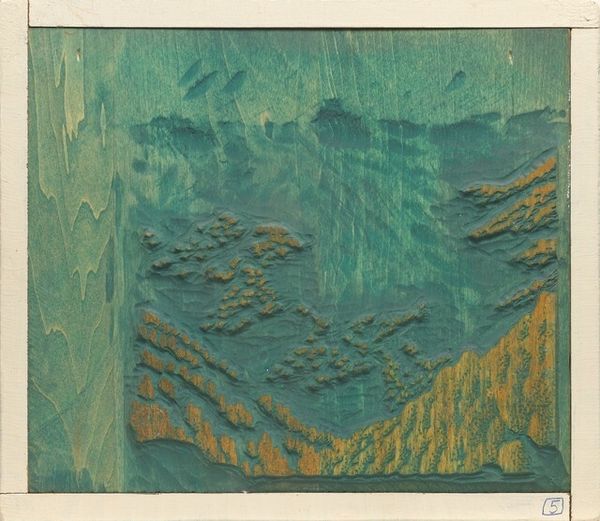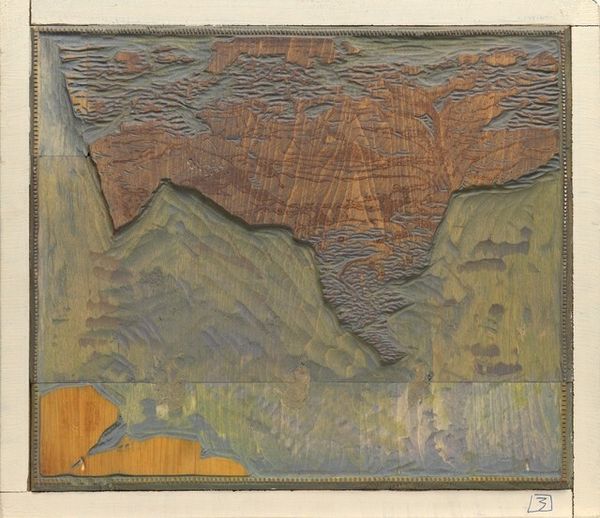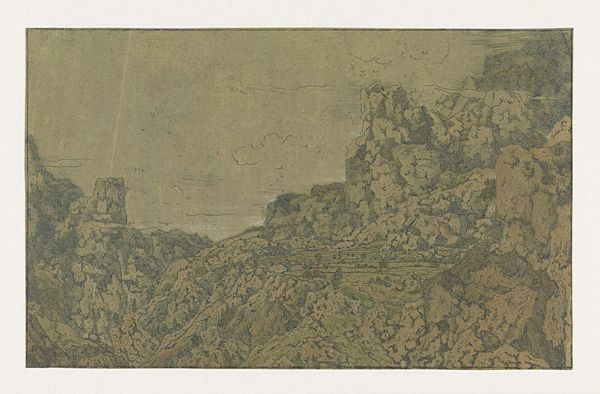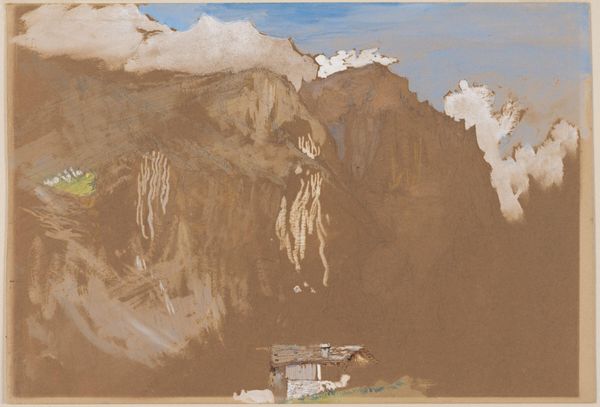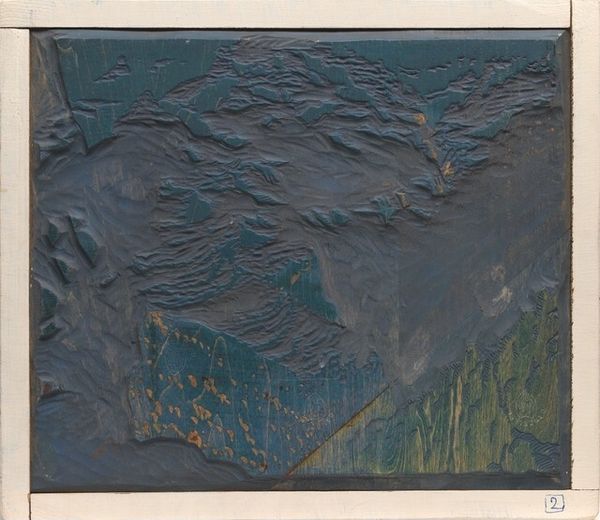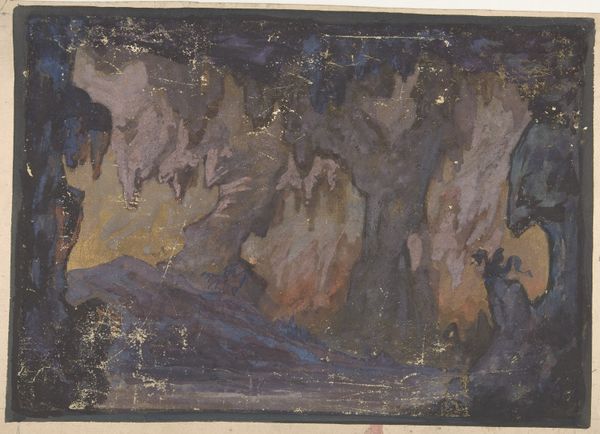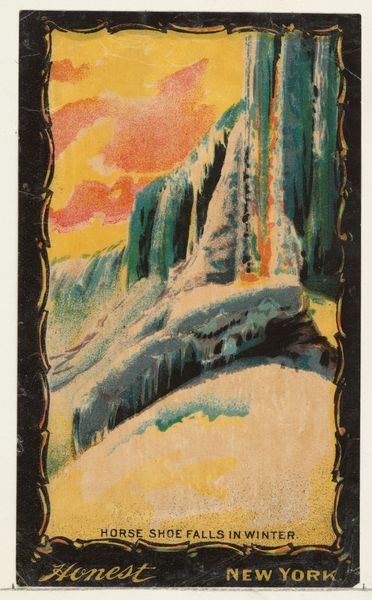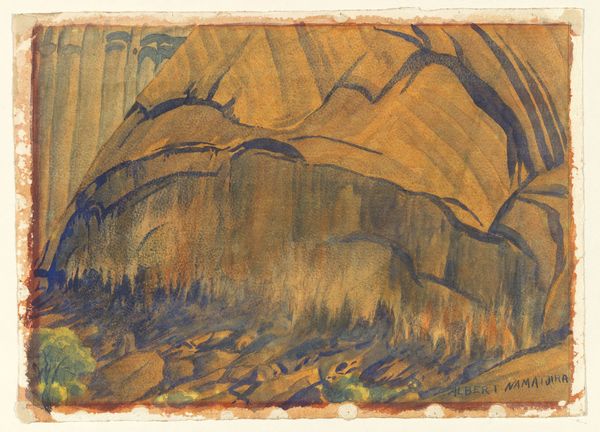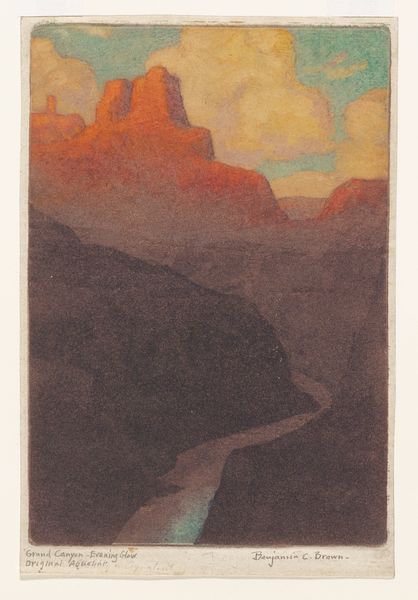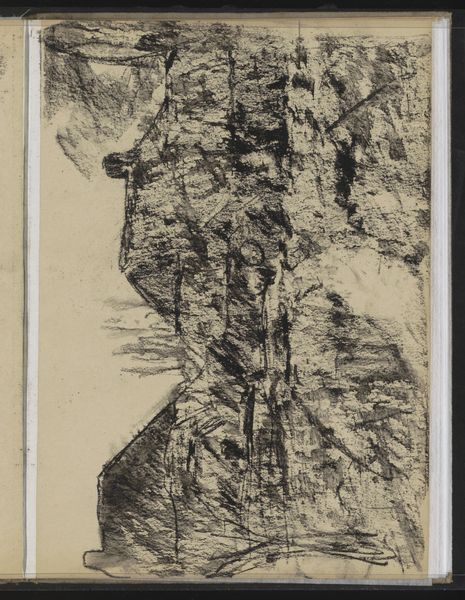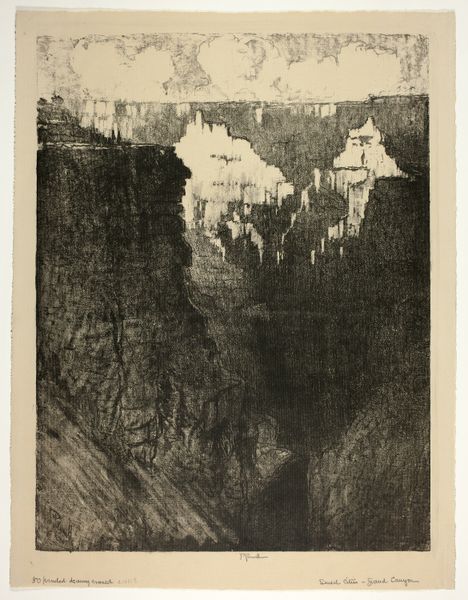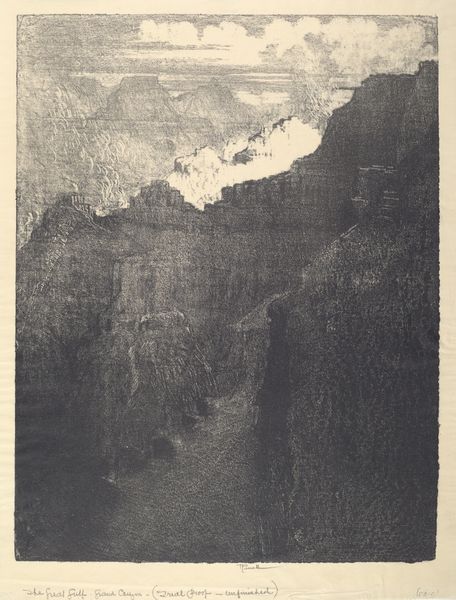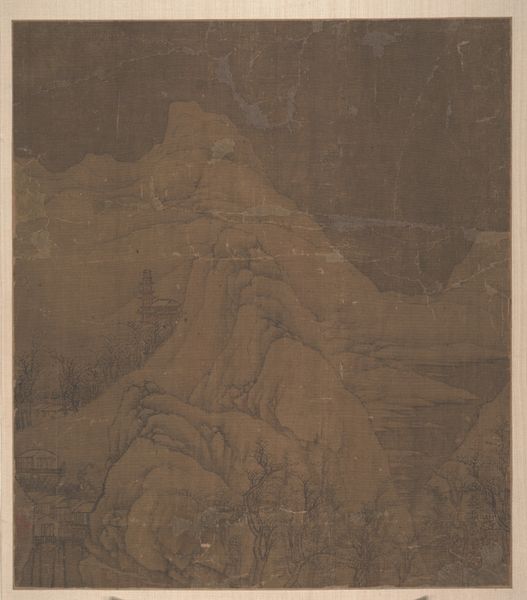![Bright Angel Trail [pink block] by Gustave Baumann](/_next/image?url=https%3A%2F%2Fd2w8kbdekdi1gv.cloudfront.net%2FeyJidWNrZXQiOiAiYXJ0ZXJhLWltYWdlcy1idWNrZXQiLCAia2V5IjogImFydHdvcmtzL2UwYjg5N2RmLTY1MzUtNGE5Ny04ODEzLTZlMTQ3ZDI5ODVhMy9lMGI4OTdkZi02NTM1LTRhOTctODgxMy02ZTE0N2QyOTg1YTNfZnVsbC5qcGciLCAiZWRpdHMiOiB7InJlc2l6ZSI6IHsid2lkdGgiOiAxOTIwLCAiaGVpZ2h0IjogMTkyMCwgImZpdCI6ICJpbnNpZGUifX19&w=1920&q=75)
print, relief-print, woodcut
#
art-nouveau
# print
#
relief-print
#
landscape
#
woodcut
Dimensions: block: 25.4 × 29.53 × 1.91 cm (10 × 11 5/8 × 3/4 in.) framed: 28.58 × 32.7 × 1.91 cm (11 1/4 × 12 7/8 × 3/4 in.)
Copyright: National Gallery of Art: CC0 1.0
Curator: Gustave Baumann's woodcut, "Bright Angel Trail [pink block]," from 1919, is before us, showcasing his adept use of relief-printing to depict the grandeur of nature. What's your initial response? Editor: It looks…solid, you know? Like a chunk of the earth itself, roughly hewn and pulled from the canyon wall. I can almost smell the dry desert air and feel the sun beating down. Curator: Indeed. The materiality of the woodcut enhances this sense of raw earthiness. Note how Baumann orchestrates space through stratified layers. The sharp diagonals suggest depth, pulling the viewer into the landscape's formidable interior. The stratification suggests not only depth but also time itself and evolution, doesn't it? Editor: Absolutely. It's not just about the vista; it's about geologic time made visible. The repetitive marks, the rhythmic cuts… they remind me of wind and water slowly carving the stone over eons. And those stylized trees? Like little poems of persistence clinging to the rock. Curator: A keen observation. Baumann’s approach flirts with Art Nouveau, abstracting natural forms while retaining their essence. The color, while muted, contributes to a harmonious composition. The palette is intentionally limited to evoke a certain mood. Editor: It’s a really interesting constraint, that limited palette. He squeezes a surprising range of emotion from those earth tones, from the inviting cool shadows to the baked-red highlights. Feels almost… hopeful, despite the immensity. A testament to survival in harsh beauty, what do you think? Curator: Survival and monumentality intertwined. Consider the block's formal structure. The organization pushes and pulls with compositional stability but, the slight angularity offers a push towards deconstruction and instability which leads to an important dynamic. Editor: Which leads me to see what initially felt monolithic into something vibrantly alive. Baumann's not just representing a landscape, but conveying its breath and rhythm. The marks feel like the earth’s pulse itself! Curator: A perfect summarization of its essence and a key aspect of its understanding. Editor: Thanks! Always nice to hear a nod, so to speak, from formalism and semiotics!
Comments
No comments
Be the first to comment and join the conversation on the ultimate creative platform.
